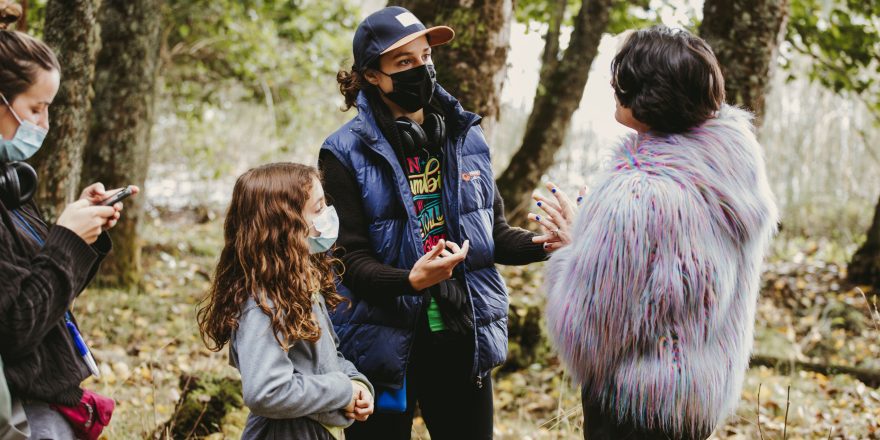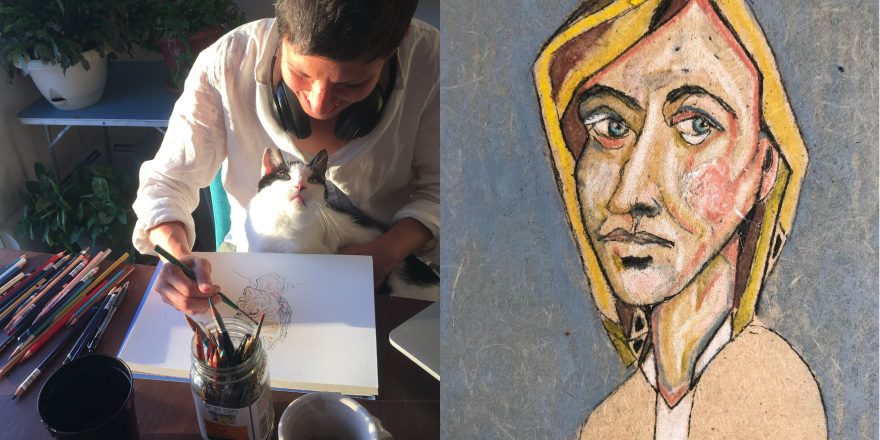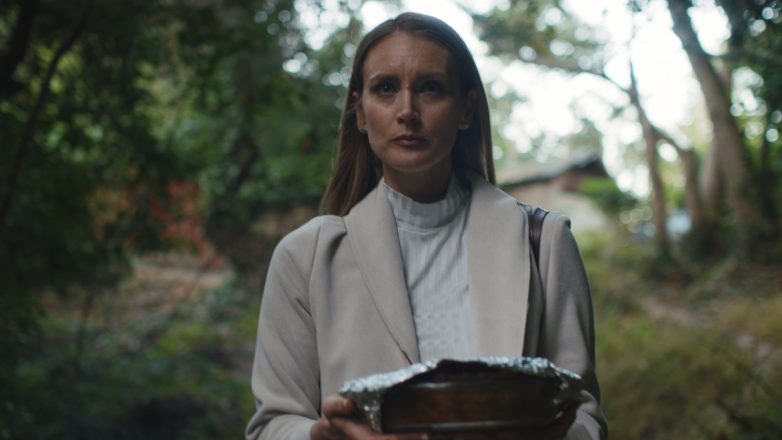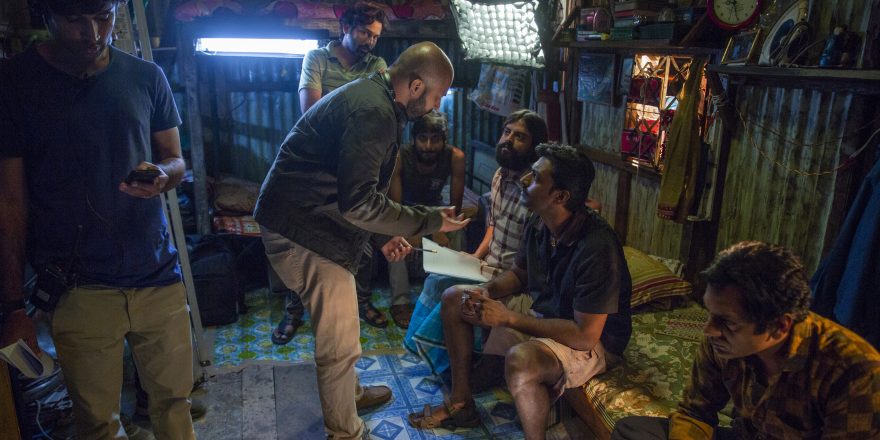The Not Knowing
I never know how something will end — or where it will end. This is sort of obvious for any human being, but I like making that point every time I am confronted with a new idea or project. I like to inhabit the place of not knowing, and from that place imagine the possibilities my next step will offer. I think being in this uncertainty must be related to levels of adrenaline that hit the brain in a sweet, exciting way.
The First Line
Although I make films, I feel that this sort of “practice” of the not knowing is most crystalized when I draw. I like drawing so very much. I wish I could do it more often. The way I like to do it is with a drawing pen, not a pencil. The idea is that I won’t be able to erase anything I put on the white paper. So I start drawing, having no clue what the drawing will be. On this occasion, it is something like this:
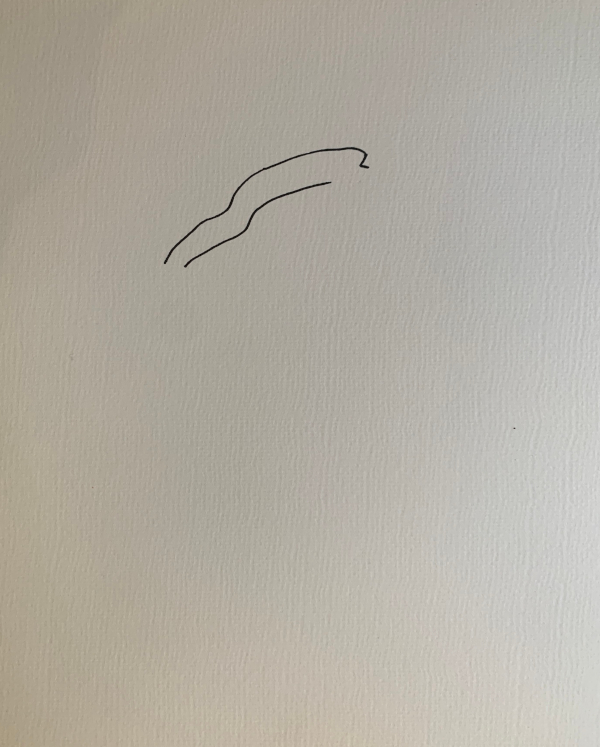
Emptying the Bucket of Common Cozy Places
This first impulse needs to come from a neutral state. If I arrive at the blank paper with a bunch of pre-conceived ideas, it doesn’t work. You have to get rid of the map. So a big part of tracing that first line comes with pushing away all the common places my mind goes when I think, “What does a good drawing look like?” I need to exorcise all desires of drawing what I’m good at or what I am comfortable with drawing (for example, my default go-to place is distorted human faces).
Getting through this swampy place of battling with my brain feels almost like 90 percent of the whole job. It’s not easy, because it’s like pulling out a plug whose function is to make something that “works.” And this tendency can only come from copying something that has worked for you in the past (or that worked for someone else in the past).
There’s no real strategy to empty your head of past experiences. Just by thinking you should get rid of the past successes you have had in life, you are pulled back to them. It’s survival mode. We have been wired to take the formula that has already worked. We want to succeed spending the least amount of mental and physical energy… because when we spend more energy, often we suffer.
So, since there’s no formula for this part (if someone has one, please share), I just say to myself, “Make a mistake – go ahead and mess it up,” and this gives me the freedom to just try something. Just try it.
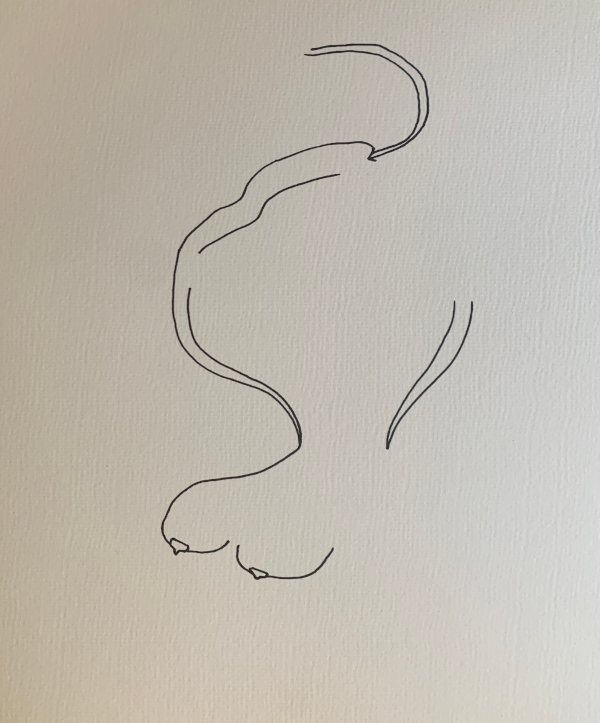
Trying Has Been Painfully Underrated
A few weeks ago, I was in the south of Chile, at a retreat. I went with one of my sisters and stayed in the house of a stranger who ended up being a wonderful woman. My first night there, I read an excerpt of a book called El Conocimiento Silencioso, which collects some of the ideas of a very wise Mexican indigenous master called Don Juan Matus. It talked about “the try” (“el intento”) as a way to connect with knowledge — or the other side. This is a very reductive/general explanation of a deep/complex text, but if we can stay with this idea for a moment, this idea that trying (just trying) strengthens our bond to inner knowledge, wouldn’t you try more often, without seeking that result which people around you seem to expect?
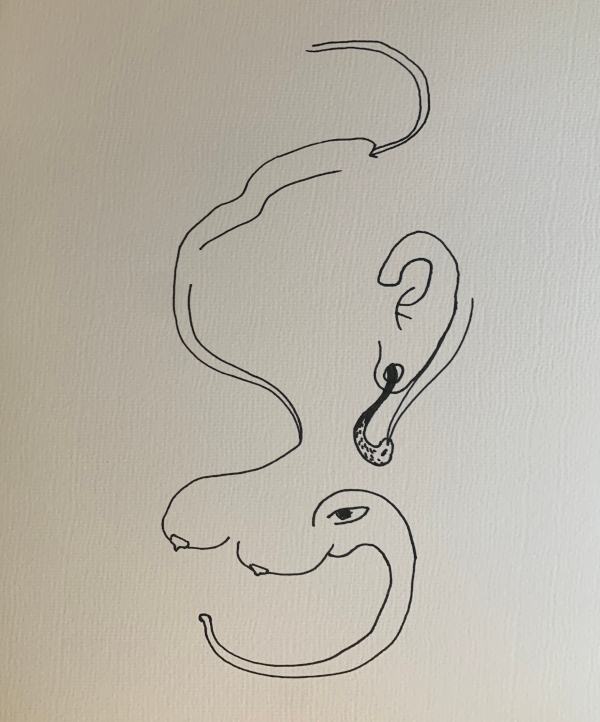
Origins of Trying
Before becoming a filmmaker, I thought I would be a painter. I am from Chile, and in the 1990s there was no real option of becoming a film director here. I remember reading the names of the big American directors whose films filled the theaters down here, like Spielberg and Lucas … and then thinking that my last name, Alegría, didn’t sound important enough to be “up there.” So it was really a very heavy belief, that I didn’t question.
But as I grew older, I discovered independent film through Luis Buñuel and his band of surrealists and the first short films of David Lynch, and I started absorbing cinema from a new perspective. I saw in these raw, inventive films something I had never seen as a child in American adventure films. I dug into the first surrealists and I played their games. I truly felt the spirit of cinema through acts of provocative creativity … and the beginning–middle–and–end paradigm lost all hegemony for me.
I was about to turn 18 years old when I told my parents that my soul would rot if they made me study engineering (the career I was apparently “made for”). Amongst adult tears of fear and disappointment, I decided that I would not only make films, but I was going to make them my own way as acts of resistance against the established canons. I would use a nonsensical path to navigate this terrain, searching for those sensations that the surrealists first imprinted on my soul. How? By letting the film (or any project I made without the intervention of an industry) reveal itself in the process. In drawing, I just keep tracing lines and colors and maybe letters, and the creation starts showing itself. I get very excited when I discover this, time and time again.
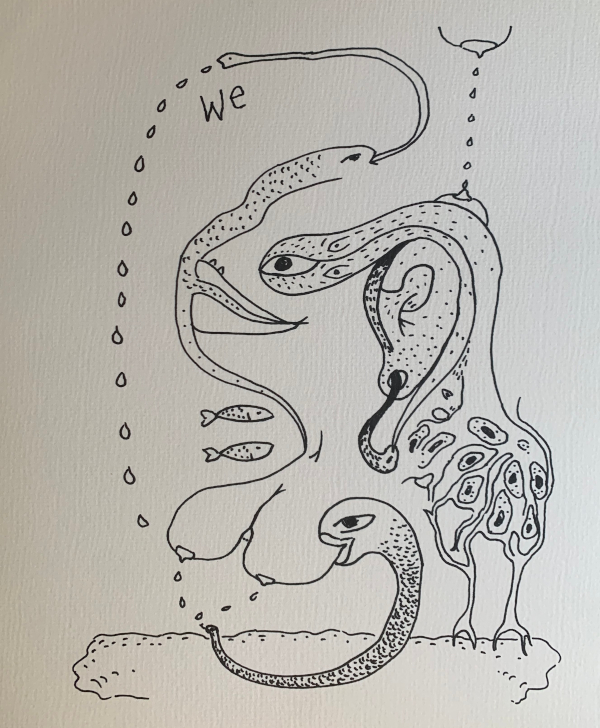
The Illusory Beauty of Finding the End
In 2011, I went to my first film festival outside of my country. I had applied to a talent campus with a few minutes of a short film I made, and luckily I got in. Besides the workshops I took, I saw a few independent films. I came back home inspired, and feeling that cinema was closer to me than I thought. I didn’t need to make a huge film, I could write a film like the ones I had seen … Never before had I thought of myself as being part of the illustrious film directors of the world. But the urge to tell a story was bigger than my fear of people telling me I wasn’t at the level of a real filmmaker.
So I opened my free screenwriting software, I opened a blank page, I wrote a title, and I started writing a story. I wrote for two weeks, not knowing how the story would unfold. The only rule I had was that I could not look back or make any changes to what I had written already. I had to write whatever came into my mind in the form of prose and dialogue. The vomit draft. I wrote until I had 88 pages.
Eleven years after that first impulse, I premiered my film. After years of imagining, writing, going back to grad school, more imagining, and then making the film, I was able to arrive at an ending in the edit room … but like everything else in my life, the film continues to bring new perspectives. It ends on the screen and opens up possibilities every time a person reflects upon it. Where will it end? Somewhere between everywhere and nowhere, I suppose.
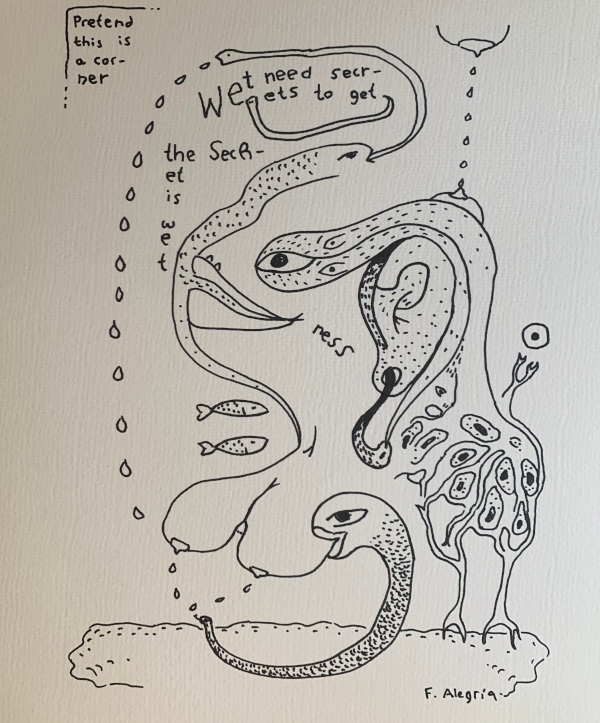
Featured image shows Francesca Alegría (center) during the making of The Cow Who Sang a Song Into the Future. All images courtesy Francesca Alegría.



